Info
Subfamily: Pooideae
Genus etymology: pheleum is the acient Greek name for an unidentified marsh grass
Species etymology: pratense = "of meadows" [Latin] refering to its habitat
Photosynthetic type: C3 (cool season)
Nativity: naturalized - intentional
First recorded in Hawaiʻi: 1917
Map
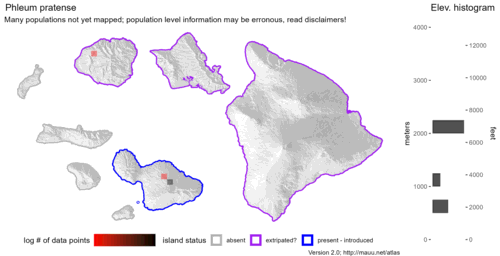
Inflorescence
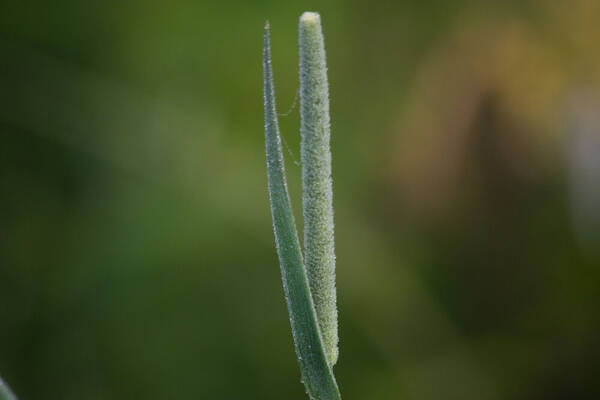
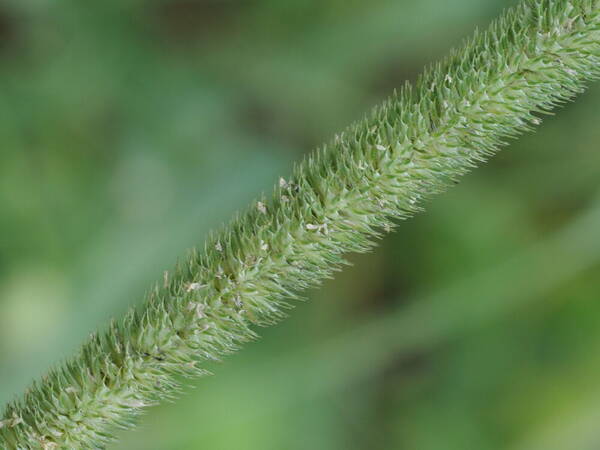
Habit
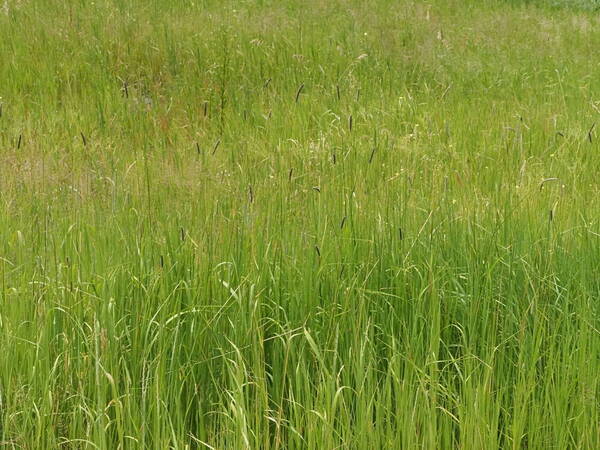
Spikelets
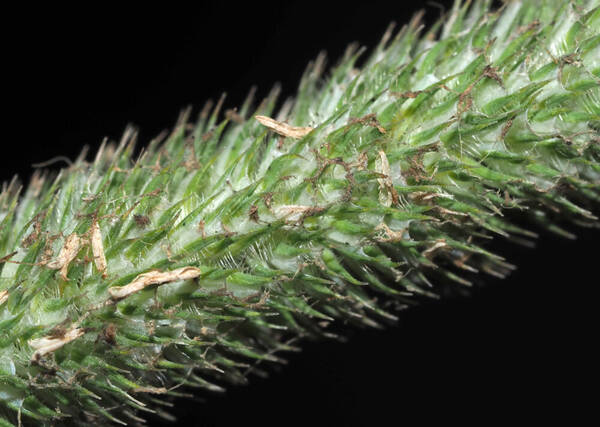
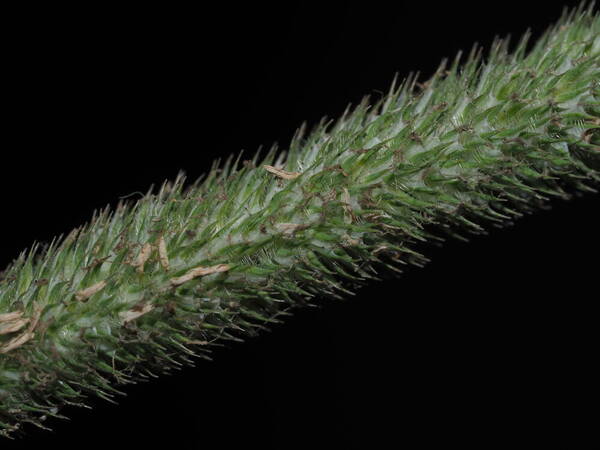
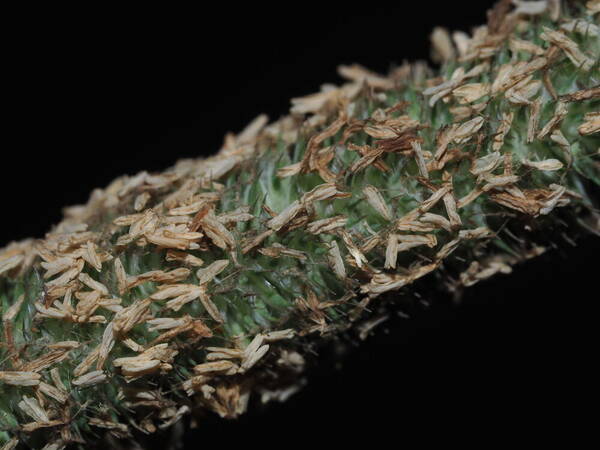
Description
Plants perennial; loosely to densely cespitose. Culms (20) 50-150 cm, usually erect, lower internodes frequently enlarged or bulbous. Sheaths of the flag leaves not inflated; auricles occasionally present, inconspicuous; ligules 2-4 mm, obtuse to acute; blades to 45 cm long, 4-8(10) mm wide, flat. Panicles (3)5-10(16) cm long, 5-7.5(10) mm wide, 5-20 times as long as wide, not tapering distally; branches adnate to the rachises. Glumes 3-4 mm, sides usually puberulent, keels pectinate-ciliate, apices awned, awns 1-1.5(2) mm; lemmas (1.2)1.7-2 mm, about 1/2 as long as the glumes, usually puberulent; anthers 1.6-2.3 mm. 2n = 42 (21, 35, 36, 49, 56, 63, 70, 84).
(Description source: Barkworth, M.E., Capels, K.M. & Long, S. (eds.) 1993. Flora of North America, north of Mexico. Volume 24. Magnoliophyta: Commelinidae (in part): Poaceae, Part 1. Oxford University Press, New York. 911 pp. http://floranorthamerica.org/Phleum_pratense )